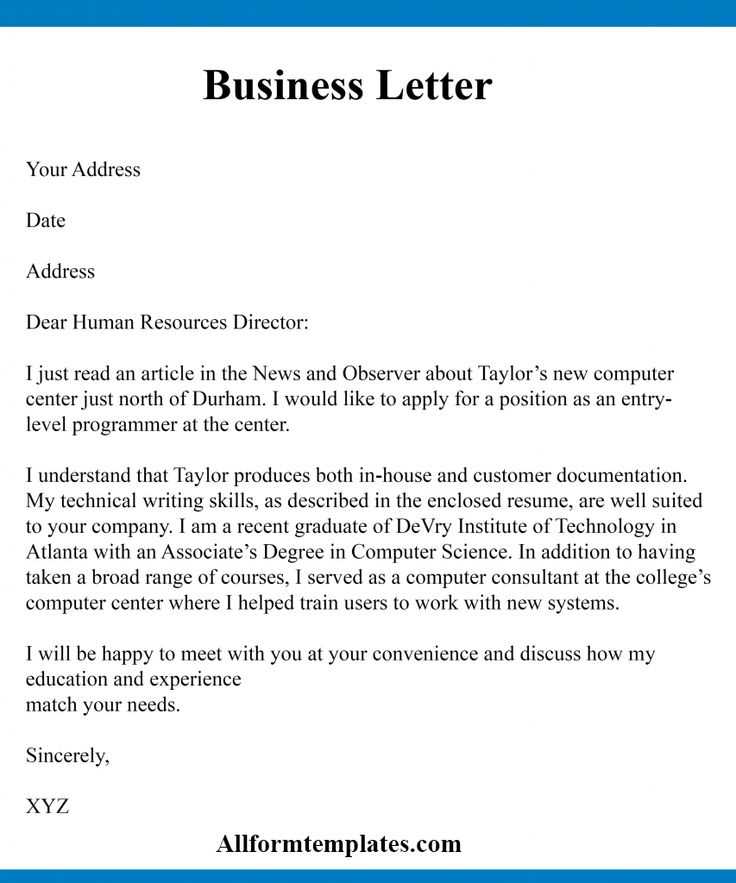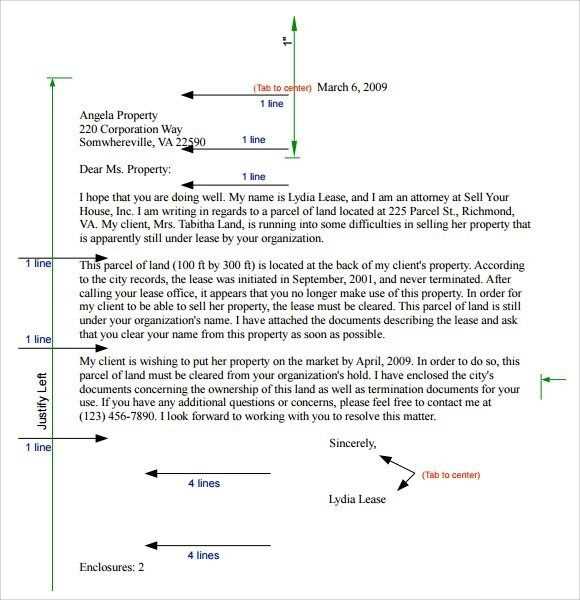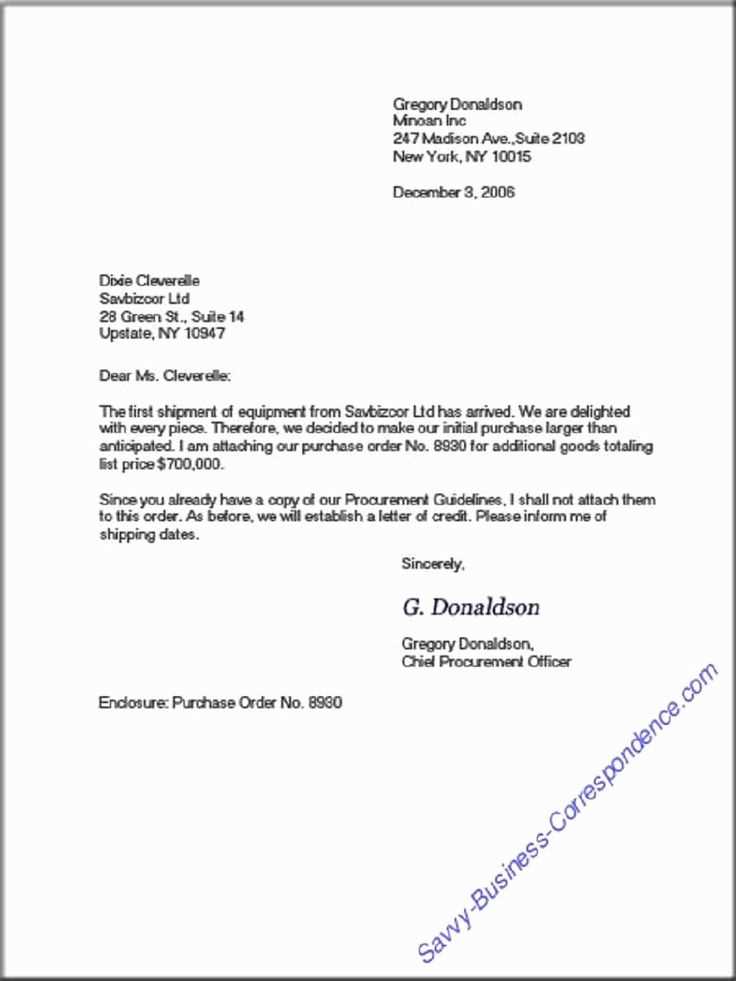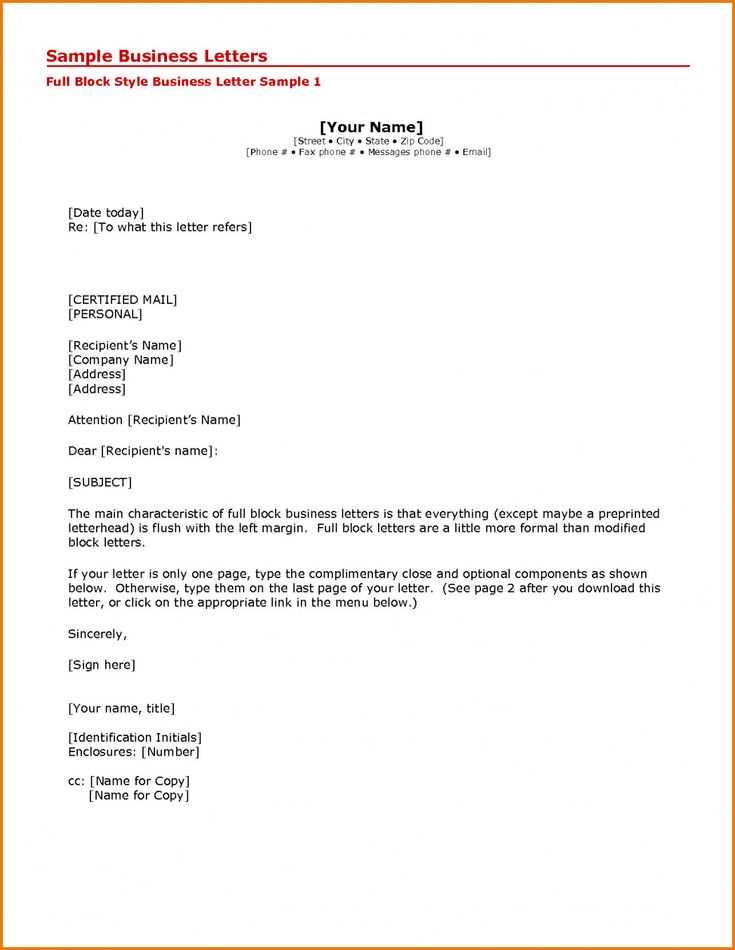How to Use the Proper Template for a Business Letter

Effective written communication is essential in the corporate world. Whether you are contacting a colleague, a client, or a potential partner, the structure of your message plays a significant role in making a strong impression. A well-crafted document not only conveys your points clearly but also reflects your professionalism.
To ensure your message is presented appropriately, it’s important to follow a few key principles. These guidelines help maintain clarity, professionalism, and respect, while ensuring that your communication is received with the attention it deserves. By adhering to a structured approach, your correspondence will be more impactful and easier to understand.
Key Elements of a Business Letter

Every formal communication requires certain components to ensure clarity, professionalism, and effectiveness. The structure of your correspondence should allow for a smooth flow of information, creating an impression of competence. Each section serves a specific purpose, helping the recipient understand your intent while presenting your message in the best possible light.
Essential Sections to Include
The following table highlights the critical components that should be present in every formal communication:
| Section | Description |
|---|---|
| Heading | Includes the sender’s and recipient’s contact details, along with the date. It sets the context for the message. |
| Introduction | A brief overview of the purpose of the communication. It provides the recipient with a clear understanding of the main topic. |
| Body | Contains the main content. This section conveys the detailed message, addressing key points and relevant information. |
| Conclusion | A polite ending that often includes a call to action or a summary of the message. |
| Sign-Off | The final polite remark before your signature, expressing gratitude or anticipation for a response. |
Organizing the Content Effectively
Each part should be clear and concise. The opening should establish the purpose, the body should elaborate on the details, and the closing should leave the recipient with a clear sense of action or next steps. Proper organization helps to ensure that the communication is not only professional but also effective in achieving the desired outcome.
Choosing the Right Format for Letters
Selecting the correct structure for formal communication ensures that your message is conveyed clearly and professionally. The format influences not only the readability but also the overall tone and perception of your message. By adhering to established guidelines, you ensure that the recipient understands your intent and maintains respect for the communication process.
There are different approaches to arranging the elements within the document. Depending on the nature of the correspondence, the format might vary slightly, but it is essential to follow a consistent style that aligns with formal standards. This consistency enhances the document’s effectiveness and fosters professionalism.
Structuring Your Letter Professionally

Arranging the content of your written communication in a clear and organized manner is essential for maintaining professionalism. A well-structured message helps convey your points effectively, ensuring the recipient can easily follow your thoughts and take appropriate action. Proper structure reflects your attention to detail and respect for the reader.
To achieve this, consider the flow of your ideas, starting with an appropriate greeting, followed by the main body, and concluding with a polite sign-off. Each section should serve a clear purpose, with smooth transitions to ensure the document is coherent and persuasive. A professional layout makes a positive impact, encouraging the recipient to engage with the content meaningfully.
Tips for Writing a Clear Opening

The beginning of your written communication sets the tone for the entire message. A strong, direct start helps the recipient understand the purpose immediately and frames the content effectively. Crafting a clear and concise opening can ensure that the rest of the document is well-received and understood.
Be Direct and Purposeful
Start with a straightforward statement that clearly outlines the reason for your communication. Avoid ambiguity and focus on the key message you want to convey. A precise introduction eliminates any confusion and helps the reader know exactly what to expect.
Maintain a Polite and Professional Tone
While clarity is essential, it’s equally important to maintain a respectful and courteous tone. A friendly yet formal greeting or opening sentence sets a positive atmosphere, showing the recipient that you value their time and attention.
How to Close a Business Letter
The conclusion of your written communication plays a critical role in leaving a lasting impression. A well-crafted closing provides clarity, reiterates the main points, and encourages the recipient to take the desired next steps. A strong ending ensures that your message is complete and leaves no room for uncertainty.
When closing, make sure to:
- Summarize any important action steps or requests
- Express appreciation or gratitude, if relevant
- Indicate your availability for follow-up or further discussion
Additionally, choose an appropriate sign-off that aligns with the tone of your communication:
- Sincerely: A formal, widely used closing for most types of correspondence.
- Best regards: A slightly less formal option, but still professional.
- Kind regards: A warm, yet professional, ending suitable for more personal business relationships.
Common Mistakes to Avoid in Letters
Even small errors in written correspondence can create confusion or leave a negative impression. To ensure your message is taken seriously, it’s essential to be aware of common pitfalls that can undermine the professionalism of your communication. Avoiding these mistakes helps maintain clarity and respect throughout the document.
Overcomplicating the Language
Using overly complex language or jargon can make your message difficult to understand. Aim for simplicity and clarity, ensuring that your points are easy to follow. Clear and concise writing will always be more effective than trying to impress with complicated words.
Neglecting to Proofread
Spelling and grammatical errors can easily slip through, even in well-crafted messages. Always take the time to review your work before sending it. A quick proofread can catch mistakes and help ensure the final version is polished and professional.